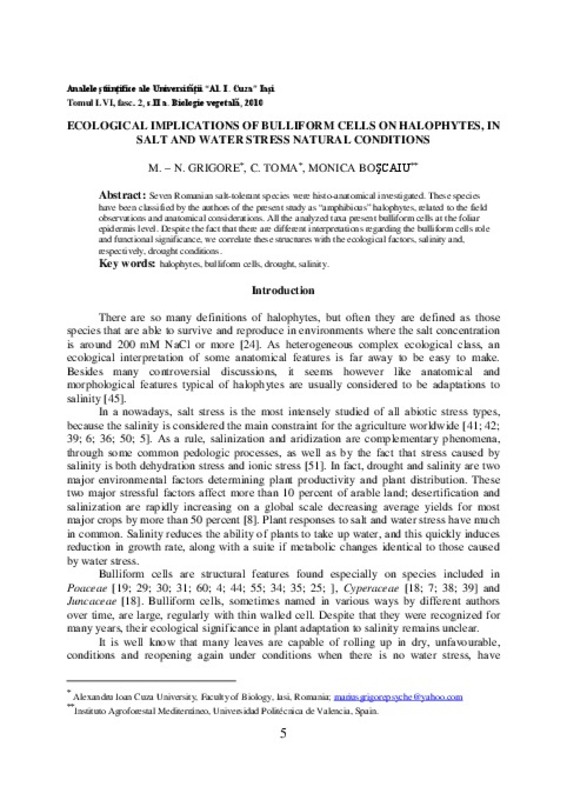JavaScript is disabled for your browser. Some features of this site may not work without it.
Buscar en RiuNet
Listar
Mi cuenta
Estadísticas
Ayuda RiuNet
Admin. UPV
Ecological implications of bulliform cells on halophytes, in salt and water stress natural conditions
Mostrar el registro completo del ítem
Grigore, MN.; Toma, C.; Boscaiu, M. (2010). Ecological implications of bulliform cells on halophytes, in salt and water stress natural conditions. Analele Stiintifice ale Universitatii "Alexandru Ioan Cuza" din Iasi. Biologie Vegetala. 56(2):5-15. http://hdl.handle.net/10251/101713
Por favor, use este identificador para citar o enlazar este ítem: http://hdl.handle.net/10251/101713
Ficheros en el ítem
Metadatos del ítem
| Título: | Ecological implications of bulliform cells on halophytes, in salt and water stress natural conditions | |
| Autor: | Grigore, Marius N. Toma, Constantin | |
| Entidad UPV: |
|
|
| Fecha difusión: |
|
|
| Resumen: |
[EN] Seven Romanian salt-tolerant species were histo-anatomical investigated. These species
have been classified by the authors of the present study as ¿amphibious¿ halophytes, related to the field
observations and anatomical ...[+]
|
|
| Palabras clave: |
|
|
| Derechos de uso: | Reserva de todos los derechos | |
| Fuente: |
|
|
| Editorial: |
|
|
| Versión del editor: | http://www.bio.uaic.ro/publicatii/anale_vegetala/anale_veg_index.html | |
| Código del Proyecto: |
|
|
| Agradecimientos: |
|
|
| Tipo: |
|







